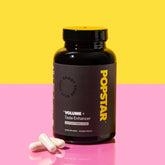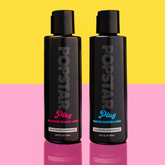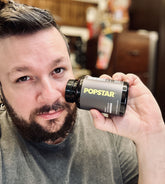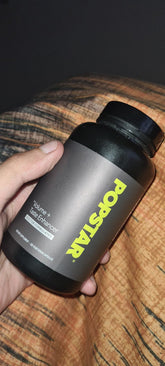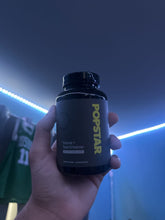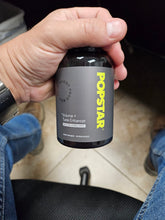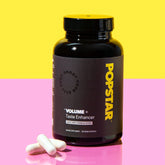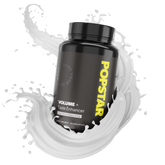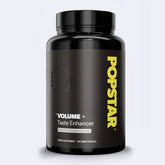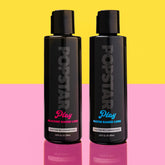Anal bleaching is a cosmetic skin-lightening practice designed to reduce hyperpigmentation around the anus. Many men pursue anal bleaching to improve comfort with body image, reduce darkened skin tone differences, or address age- or friction-related pigmentation. While it is largely a cosmetic preference, it intersects with men’s health through skincare, hygiene, and concerns about irritation, sensitivity, and safe product use.
Table of Contents
- Definition and Overview
- Quick Facts
- Why Anal Bleaching Matters for Men
- How Anal Bleaching Works
- Benefits and Reasons Men Consider Anal Bleaching
- Risks and Potential Side Effects
- Anal Bleaching for Men: At-Home vs. Professional Treatments
- Consent, Communication, and Relationship Dynamics
- Interaction With Medical or Skin Conditions
- Risk Reduction Strategies
- When to Avoid Anal Bleaching
- Frequently Asked Questions About Anal Bleaching
- References and Further Reading
- Disclaimer
Definition and Overview
Anal bleaching, also known as anal whitening, anal lightening, or intimate area bleaching, refers to cosmetic treatments aimed at lightening the pigmentation of the perianal skin. The treatment is commonly performed with topical creams, chemical exfoliants, or laser-based procedures.
In men, anal bleaching has become increasingly common due to broader awareness of intimate skincare, interest in grooming, and concerns about body aesthetics. It does not affect sexual function, but it can influence perceived confidence or comfort in intimate situations.
Quick Facts
| Category | Details |
|---|---|
| Primary term | Anal bleaching |
| Common alternatives | Anal whitening, anal lightening, intimate area bleaching |
| Common users | Both men and women; increasing interest among men |
| Methods | Topical creams, at-home products, professional chemical peels, laser treatments |
| Risks | Irritation, burning, inflammation, chemical sensitivities |
| Suitable for | Men seeking cosmetic lightening of intimate skin tone |
| Not suitable for | Men with active skin infections, eczema, fissures, or allergies to lightening agents |
Why Anal Bleaching Matters for Men
Anal bleaching for men is relevant not only cosmetically but also in the context of skin health, safe grooming habits, and understanding how certain products can interact with sensitive areas. The skin around the anus is thin, easily irritated, and prone to friction, which can cause hyperpigmentation. Understanding safe lightening practices helps men make informed grooming decisions.
How Anal Bleaching Works
Anal bleaching works by reducing melanin production in the perianal skin. Depending on the method, this may involve:
- Enzyme or acid exfoliation to remove darker skin cells
- Tyrosinase inhibitors that reduce melanin formation
- Laser treatments that break up deeper pigmentation
Common ingredients include kojic acid, niacinamide, arbutin, and azelaic acid. Hydroquinone is sometimes used in clinical settings but should be approached with caution due to higher irritation risk.
Benefits and Reasons Men Consider Anal Bleaching
- Improved confidence during intimacy
- Evenness of overall skin tone
- Reduced appearance of friction- or age-related darkening
- Feeling more comfortable with personal grooming routines
Some men pursue it because sexual partners have commented on pigmentation differences, while others choose it for personal comfort.
Risks and Potential Side Effects
| Risk | Description | Ways to Reduce |
|---|---|---|
| Irritation | Redness, discomfort, or burning | Patch test, use mild products |
| Chemical burns | Overuse of strong products | Avoid high-strength acids at home |
| Allergic reactions | Sensitivity to ingredients | Know ingredient list and allergies |
| Infection | Broken skin increases risk | Avoid use on cuts, fissures, or inflamed skin |
Anal Bleaching for Men: At-Home vs. Professional Treatments
At-Home Anal Bleaching
- Uses creams or gels marketed for intimate lightening
- Lower strength; safer but slower results
- Must be applied carefully to avoid internal contact
Professional Treatments
- Performed by clinicians or estheticians
- Options include chemical peels or laser lightening
- Faster results but more expensive
- Requires thorough pre-treatment consultation
Consent, Communication, and Relationship Dynamics
Although anal bleaching is a personal grooming decision, it can affect intimacy. Men sometimes pursue anal lightening due to partner preferences. Clear communication is important to avoid pressure.
Examples of healthy communication strategies:
- Expressing curiosity rather than insecurity
- Asking about boundaries before beginning treatment
- Reassuring a partner that grooming choices are optional
Interaction With Medical or Skin Conditions
Anal bleaching may not be suitable for men with:
- Active dermatitis
- Psoriasis
- Hemorrhoids
- Anal fissures
- Recent anal surgery
Skin-lightening agents can worsen inflammation and increase discomfort.
Risk Reduction Strategies
- Always perform a patch test on non-intimate skin first
- Use fragrance-free, dermatologist-tested products
- Avoid bleaching immediately after shaving or waxing
- Start with low-intensity formulas
- Stop immediately if burning persists
When to Avoid Anal Bleaching
Men should avoid anal bleaching if they have:
- Open wounds, rashes, or active infection
- Known allergies to common bleaching ingredients
- Chronic gastrointestinal conditions causing irritation
- A history of severe skin sensitivity
Frequently Asked Questions About Anal Bleaching
What does anal bleaching mean in men’s health?
Anal bleaching refers to cosmetic skin lightening around the anus. In men’s health, it is considered a grooming choice rather than a medical treatment.
Is anal bleaching normal for men?
Yes, interest among men has increased due to grooming trends and awareness of intimate skincare.
Is anal bleaching safe?
It can be safe when performed with appropriate products and caution. However, professional guidance is recommended for strong treatments.
Can anal bleaching affect sexual performance?
No, anal bleaching does not directly affect erections or sexual function.
Can anal bleaching cause pain or burning?
Some men experience temporary irritation. Persistent burning means the product should be stopped.
Are anal bleaching creams safe?
Most over-the-counter creams are formulated for sensitive skin but vary widely in quality.
Can I do anal bleaching at home?
Yes, but choose mild products and follow instructions strictly.
Is laser anal bleaching better?
Laser treatments provide faster, more permanent results but carry higher cost and potential discomfort.
Can anal bleaching help with dark spots?
Yes, it can reduce hyperpigmentation from friction, aging, or past irritation.
What should I avoid before bleaching?
Avoid waxing, shaving, or using retinoids on the area for at least 48 hours.
How long do results last?
Results vary; many men maintain them with periodic at-home creams.
Can anal bleaching irritate hemorrhoids?
Yes, bleaching should not be performed when hemorrhoids are active.
Does anal bleaching increase infection risk?
Only if done on broken or irritated skin.
Is anal bleaching permanent?
Professional treatments last longer, but results often require upkeep.
Can partners tell if I lighten the area?
Only visually; the procedure does not change texture or function.
Will anal bleaching lighten surrounding tattoos or skin?
It may affect nearby skin but not tattoos.
Should I talk to a dermatologist first?
Yes, especially if you have sensitive skin or medical conditions.
What ingredients should men avoid?
Avoid high concentrations of hydroquinone or strong acids without professional supervision.
How do I talk to my partner about anal bleaching?
Keep communication open, emphasizing comfort and autonomy.
References and Further Reading
- Resources from major dermatology associations
- Educational material from reputable sexual health organizations
- General skincare guidance from national health services
- Articles on pigmentation and intimate skincare from credible medical sources
Disclaimer
This article is for informational and educational purposes only and does not constitute medical or mental health advice. It is not a substitute for speaking with a qualified healthcare provider, licensed therapist, or other professional who can consider your individual situation.
